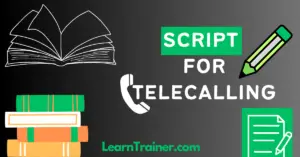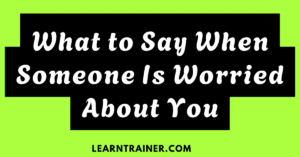Coffee chats are more than just casual conversations over a cup of coffee they’re an opportunity to connect, build relationships, and learn something new.
Whether you’re meeting with a colleague, a potential mentor, or a new contact, coffee chats are a great way to open the door to meaningful interactions. But when you’re sitting down for one, the biggest question is: What do you talk about?
Having been part of countless coffee chats throughout my career, I can tell you this: the conversation doesn’t need to be rehearsed or overly formal, but it does need to be engaging, thoughtful, and relevant.
The goal is to leave the conversation feeling like you’ve connected on a deeper level and have something to take away from it.
In this post, I’ll walk you through a variety of topics and ideas to discuss during your next coffee chat. I’ll break down the conversation structure, share real-world examples, and give you some personal tips to help you avoid awkward pauses. I’ll also dive into some mistakes to avoid so you can make the most of these interactions.
Start with Genuine Curiosity: Ask About Their Background and Journey
People love talking about themselves particularly when they’re asked about their journey and experiences. It’s a great way to get to know someone while allowing them to share what they’re passionate about.
Asking someone about their career journey, for example, can lead to rich insights that open up the conversation for more meaningful topics.
What to Ask:
- “Can you tell me a bit about your career path? How did you end up in your current role?”
- “What was one of the most unexpected challenges you faced when you were starting out?”
- “Was there a moment or decision that really shaped where you are now in your career?”
Why It Works:
Starting with personal and professional background questions opens the door to deeper, more thoughtful conversations.
It allows the other person to share their experiences, which could lead to valuable advice and lessons. It also shows that you value their perspective and are genuinely interested in their story.
Example Case Study:
During a coffee chat with a mentor, I once asked about their decision to switch industries, from corporate finance to tech. They shared not only the challenges but also how that shift shaped their approach to problem-solving.
I was able to take away advice on adaptability that helped me in my own career. This is a great way to both learn and connect over a shared experience of professional growth.
Discuss Industry Trends and Challenges
Another great way to keep the conversation engaging and relevant is by talking about the current state of the industry you both work in. This allows both of you to engage in a more analytical and forward-thinking conversation, showing that you are both informed and interested in your field.
What to Ask:
- “What are some of the biggest trends you’re noticing in the industry right now?”
- “What challenges are companies facing, and how do you see those evolving?”
- “How do you see the future of our industry shaping up in the next 5 years?”
Why It Works:
Industry-related topics help shift the conversation from personal to professional, offering an opportunity to bond over shared interests and insights.
If you’re both in the same industry, it’s a chance to see if you share similar views or if you can learn something new. Plus, discussing the challenges in your field can lead to problem-solving discussions, which are always valuable.
Example:
In a coffee chat with a colleague from a different team, we discussed the increasing focus on AI and automation in our industry.
That conversation not only broadened my understanding but also helped me consider how AI could impact my role in the future. It was a natural segue into talking about the skills we might need to stay relevant.
Dive Into Mutual Interests: Hobbies, Travel, and Life Outside of Work
While professional topics are crucial, don’t forget to let the conversation move into more personal territory. Discussing hobbies, travel, or life outside of work is a great way to build rapport. This lets you connect on a human level and can make the conversation feel more relaxed and natural.
What to Ask:
- “What’s something you’ve done recently that’s brought you joy or fulfillment?”
- “I’ve been wanting to go to [destination]; have you ever been there? What was your experience?”
- “I’m looking for some good book recommendations—what’s the best book you’ve read lately?”
Why It Works:
Talking about personal interests helps create a sense of connection beyond work. It can also reveal shared hobbies or experiences, making the conversation feel more casual and less like an interview. Plus, discussing travel or hobbies can give you a glimpse into the other person’s lifestyle and values.
Example:
In a coffee chat with a former coworker, we discussed our favorite hiking spots. I learned about a few hidden gems that I hadn’t heard of before, and it also sparked a discussion about the benefits of outdoor activities for mental health—a topic we both shared interest in.
Be Vulnerable: Discuss Lessons Learned and Challenges Overcome
One of the best ways to deepen any conversation is by being open and vulnerable. If you feel comfortable, sharing your own challenges or lessons learned can encourage the other person to do the same, creating a more authentic connection.
What to Ask:
- “What’s one of the hardest lessons you’ve learned in your career?”
- “Has there ever been a project or decision that you regret, and what did you learn from it?”
- “How do you deal with imposter syndrome, especially in high-pressure environments?”
Why It Works:
Being vulnerable builds trust and encourages open dialogue. It makes you relatable and approachable, and it helps to humanize the conversation. Vulnerability can create a powerful bond, especially if you’re both open about the struggles you’ve faced and the lessons you’ve learned.
Example:
During a coffee chat with a senior leader, I asked about his most difficult professional decision. He shared a story about a major career setback and how it changed his approach to leadership. It was a humbling moment that showed me how setbacks can be transformative, and it encouraged me to reflect on how I could learn from my own challenges.
Wrap It Up with Future Opportunities or Collaborative Ideas
Ending the conversation on a forward-looking note is crucial. Whether it’s a follow-up meeting, a potential collaboration, or even just staying in touch, making sure you end the conversation with clear intentions for the future leaves a positive impression.
What to Ask:
- “Are there any projects you’re working on that I could help with?”
- “I’d love to connect again in a few months to catch up—would you be open to that?”
- “Is there anyone else in your network you think I should meet or talk to?”
Why It Works:
Finishing on a positive, proactive note makes the conversation feel productive. It shows you’re thinking about the long-term potential of your relationship and signals that you value the interaction. It also opens doors for future opportunities, collaboration, and continued learning.
Example:
After a great coffee chat with a new contact, I asked if we could stay in touch for potential future projects. A few months later, we ended up collaborating on a project, which was a direct result of that proactive follow-up.
Mistakes to Avoid During Coffee Chats
While it’s important to focus on what to talk about, equally important is what not to talk about. Avoiding the following common mistakes can help ensure that your coffee chat stays productive and enjoyable:
Talking Too Much About Yourself:
Coffee chats should be a two-way street. While it’s great to share your experiences, don’t dominate the conversation. Make sure to ask questions and listen actively to the other person’s responses.
Being Too Formal:
Don’t turn the conversation into an interview. Avoid overly structured questions and instead, let the conversation flow naturally. Remember, it’s a coffee chat, not a formal business meeting.
Discussing Controversial Topics:
Avoid diving into controversial topics like politics or religion unless you know the person well and are certain they’re open to discussing those areas. Keep the conversation light and positive.
Forgetting to Follow Up:
If you discussed any future ideas or opportunities, make sure to follow up afterward. A simple “thank you” email and a follow-up on the topics you discussed shows you’re serious about staying in touch.
Conclusion
A successful coffee chat is all about building relationships, sharing insights, and leaving a positive impression. By following the tips outlined above, you can ensure that your next coffee chat is both productive and enjoyable. Remember, it’s not just about what you talk about—it’s about how you listen, connect, and share.
FAQs:
How long should a coffee chat last?
Typically, coffee chats last between 30 minutes to an hour, but it can vary depending on how engaging the conversation is. Don’t worry too much about the time, just be mindful of the other person’s schedule.
What if I don’t know the person very well?
If you’re meeting someone for the first time, stick to general topics like their career journey or industry trends. Gradually build rapport before diving into more personal discussions.
How can I follow up after the coffee chat?
Send a thank-you message and mention something specific from your conversation. If you discussed a future project or collaboration, express interest in taking the next step.


